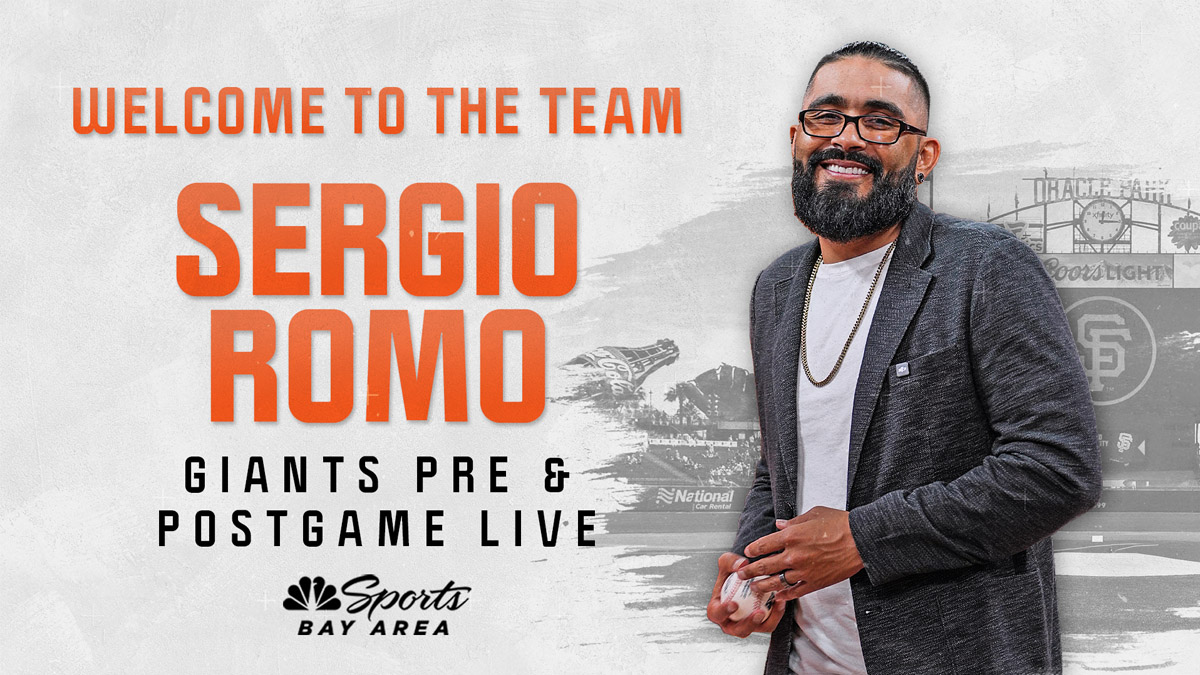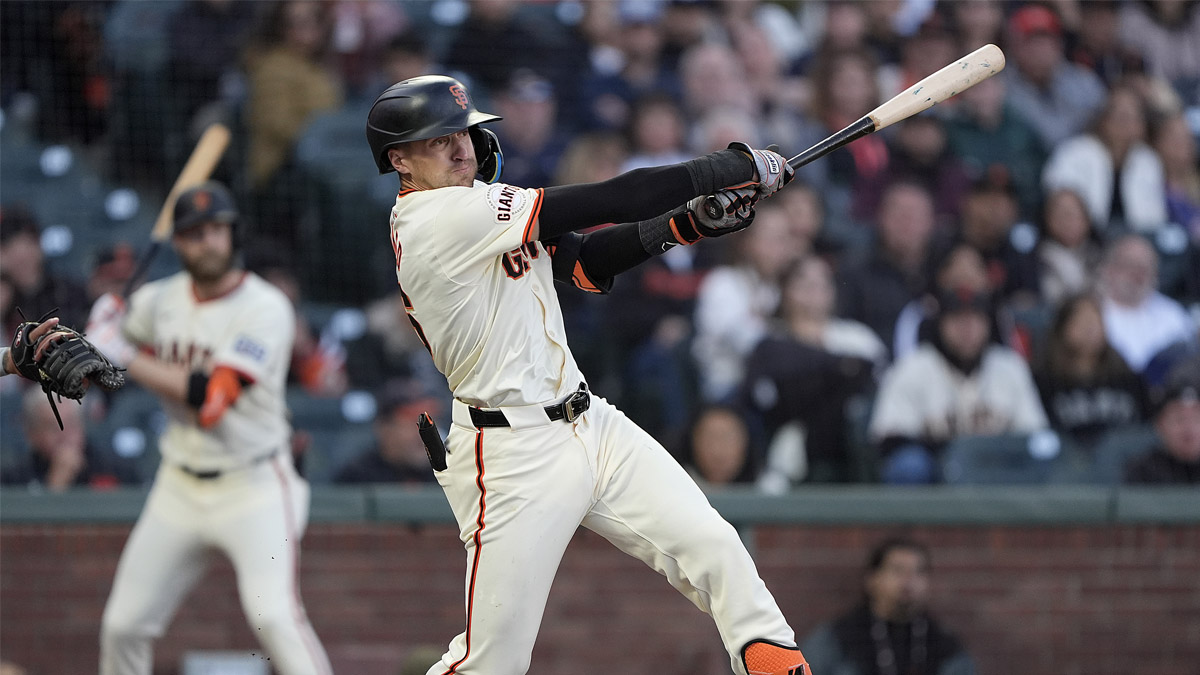Ian Gardeck is used to the Arizona sun by now. On a Saturday where it reached 106 degrees in Scottsdale, it feels different this time around. The dry heat has somehow turned humid.
"Get out of Arizona, that is the ultimate goal," Gardeck said in an interview with NBC Sports Bay Area. And not to just get to cooler climates, but to continue his major league goals.
After 30 months of rehab and three surgeries later, the grueling goal for the Giants hopeful is turning back into a reality.
For the first time since Sept. 2015, the 27-year-old Gardeck is back on the bump, this time in the Arizona Rookie League going against some batters 10 years younger than him. Feeling like a kid again, his career is back against actual kids and the feeling couldn't have been any better.
"The first outing was just incredible. It felt so weird," Gardeck said. "But it was so exciting at the same time. It wasn't scary, it was just different. To the second outing and finally being able to feel normal again, it's like, ‘Okay, I'm back.'"
Sports
Focusing on pounding the strike zone, Gardeck allowed two earned runs on three hits and two strikeouts in one inning during his season debut for the AZL Giants. His next outing was a hitless inning while striking out two more.
This timeline really starts on Nov. 20, 2015. That's when the Giants added Gardeck to the 40-man roster, getting him one step closer to San Francisco just 74 days after his season ended in San Jose.
In 2015, Gardeck showed his potential as a shutdown arm in the back of the bullpen. Gardeck was the San Jose Giants' workhorse out of the ‘pen, appearing in 61 games and 86.1 innings. Strikeouts came in bunches when he hit the rubber, totaling 104, good for 10.8 strikeouts per nine innings to only 2.8 walks per nine. His impressive season not only earned him a spot on the 40-man roster, but Gardeck was also invited to major league camp for spring training. That lasted less than two innings before surgery No. 1 and No. 2 were scheduled.
(photo via Barry Colla)
Years of blowing fastballs by batters caught up to him after a nibble of major league competition. His scar would be bigger than innings pitched that spring. Gardeck completely tore the Ulnar Collateral Ligament in his right arm. Once it was known the UCL had a complete tear and Tommy John surgery was required, he elected to repair more than one area of his body at 25 years old. That March, Gardeck underwent both Tommy John surgery and hip labrum surgery. Nine months later in the middle of his throwing progression during rehab, he feared the worst. Once again, the right UCL was completely torn. He shut it down during Christmas, hoping that the injury could just scar over and preventative treatment would work. And it did, for a little bit.
Gardeck made it back throwing until April of 2017 before the pain and discomfort was just too much. Another MRI showed the UCL to be completely torn, requiring another Tommy John surgery and a new outlook on life.
"The second one was great and I was really able to take a step back and just assess what I needed to get better at, what I did wrong the first time, and get better as a person," Gardeck said.
With the understanding that this surgery would most likely be the last he could have on his elbow and still save his career, Gardeck and the doctors took a slow route back to health. He understood who he was as a player. More importantly, is the last part of that quote above. He understood who he was as a person and who he wanted to become.
"I came out of the second one a better person, a better player, so it was good," Gardeck says.
The game that Gardeck played since he was a child and gave him a chance at millions was taken away. While it was gone, it gave him chances to expand. Baseball became a job. Summers were gone, spent crammed in a bus on his way to another minor league stadium with the hopes of fans showing up to $1 hot dog night. Even though his gift of a 100 mph fastball was gone, his life was growing. Stepping away from the game gave Gardeck a chance to mentor younger players and find new interests in life. He began reading more and became a frequent concert goer, no matter how soon the next surgery was.
"I remember the night before my second Tommy John, I flew into Laguardia, took a cab right from Laguardia to MetLife to see Metallica the night before my surgery. I just did stuff like that where I normally wouldn't.
"I didn't come up with an excuse why I couldn't and I just did it. It really was good."
Ian wasn't the only Gardeck family member to benefit from his surgeries. The end of his rehab was done at the Fischer Institute in Arizona, where his brother Dennis trained for the NFL Scouting Combine.
"That changed his life," Ian says. "He really grew into his own and he's on the Arizona Cardinals right now as an undrafted free agent. It truly was a blessing."
Between his rehab and surgeries, the Giants released or designated Gardeck for assignment three different times. Each time they brought him back, putting their trust in his gift-wrapped right arm. Before he was even selected by San Francisco in the 2012 draft, Gardeck attended a pre-draft workout for the Giants after his season at Alabama.
"I remember coming home and thinking that's a special organization. The history here, the people in the front office to the coaches, the trainers to the medical staff, it's a world-class organization," Gardeck said on the Giants. "There's not many places that stand by a guy that has three surgeries and are still friendly and cordial and happy to be around and just positive. Everybody was in my corner. It's been great to have that support from the Giants and be in such a world-class organization."
Now Gardeck can look at another player the Giants have continuously put their trust in for inspiration of his own. In the 2015 season, he was in the same bullpen as another big right-hander who can bring the heat but has been hampered by injuries, a name Giants fans are getting to know more and more with each scoreless appearance out of the bullpen - Ray Black. This past year, the two hurlers rehabbed together and hung out on and off the field, even doing a paint night with teammates. The goal always stayed the same.
"We both hung our hats on that we were meant to be up there [MLB]. We weren't given a gift to throw 100 miles an hour and do all this and not be able to get up there and taste it. We just kind of pushed through," Gardeck said.
The two have both pushed through and it's now paying off with results. Since allowing a three-run homer in his MLB debut, Black has thrown nine consecutive hitless innings with 13 strikeouts.
(photo via Barry Colla)
When Gardeck played catch for the first time after his second Tommy John surgery, he says he "was more like a little kid learning how to play again" and felt himself smiling more and more at the little things in life. No matter if it's a game or practice, Gardeck takes advantage of every moment at the ballpark, going through a two-hour routine of stretching, heating, getting on the spin bike, using a foam roller, and band work. He knows how quickly the game can be taken away and will guarantee his body is ready for the task at hand.
"I treat every practice like a game," Gardeck said. "It's one of those moments where you never know if you're going to have that opportunity again, especially after it's been taken away twice."
Baseball is back for Gardeck. From his first surgery to his return to the mound in the Arizona Rookie League, the game was gone for over 900 days. Big league dreams remain, but with a new way of life and more scars to show off, Gardeck seeks what really matters.
"Sign autographs and have kids nag you for balls and do all the stuff that you may have taken for granted and you kind of wish for. Eat a peanut butter and jelly sandwich in between stretch."
The game was gone from Gardeck - don't think he forgot what it's all about.





